
How Stress Leads to Stress Disorders

|| Abundance || Stress || Career || Communication || Concentration || Creativity || Emotions || Self-Esteem || Fear || Happiness || Healing || Intuition || Leadership || Love || Maturity || Meditation || Memory || Mental Health || Peace || Mindfulness || Inspiration || Negotiation || Personality || Planning || PMA || Reading || Relationships || Relaxation || Success || Visualization || The Secret || Master Key System || Videos || Audio || Our Books || Being the Best || Resources ||
To most depressed or anxious patients, why they suffer from these maladies is a great mystery. They go to their doctors with symptoms such as sleeplessness, anxiety, tension, crying spells, tiredness and poor concentration. After thoroughly examining and testing them, the doctors tell them that no medical reason can be found for their seemingly serious symptoms. To make sense of the symptoms, the doctors then say that the disorder is a result of a chemical imbalance. However, the truth is that the chemical imbalance is the end result of an extraordinary amount of stress combined with poor coping.
Reading this, almost all people in such a situation might wonder, "How could this be when I handled my stress so well by being strong?" Therein lies the problem. People who readily fall apart when upset never become sick with stress disorders. And curiously, by the time a person is down with a stress disorder, he has blocked off from his awareness almost all his painful emotions, as well as the memory of stressful events and the problems that caused them.
A. History of serious traumas. The symptoms of the stressed-out person are just the tip of the iceberg (see picture 5). Every person suffering from stress disorder has been through many bad events and problems in his life, and he has experienced numerous painful, toxic emotions related to these problems. His balloon has inflated many times because of death of loved ones, abandonment, betrayal of trust, conflict, disappointment, assault, accident, physical, emotion and sexual abuse, breakups, serious illness and other tragedies. Bad memories of these events and problems, stored in his hidden mind, have become the submerged part of the iceberg.
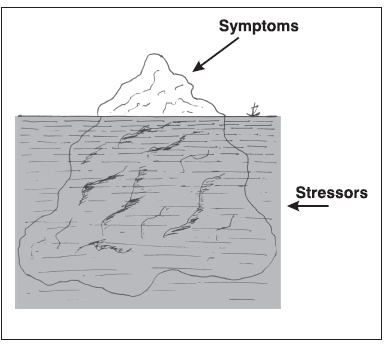 Picture 5: Stress symptoms are just the tip of the iceberg.
Picture 5: Stress symptoms are just the tip of the iceberg.
B. A stressed-out person has had an overdose of painful emotions. In response to these serious bad events and problems of life, the stressed-out person has repeatedly experienced large doses of toxic, painful emotions in his mind. We noted thirty-six of them above. The majority of stressed-out people admit to skilled therapists having experienced most, if not all, of these painful emotions in large doses, over several years prior to becoming sick.
IC. Coping by burying. As painful emotions flood the conscious mind, the stressed person gets rid of them, shrinks his balloon and calms himself down by making one simple mistake: instead of shrinking his balloon by means of appropriate coping methods, he says to himself, "This is too upsetting for me. I will be strong. I will not think about it, I will not talk about it. I will just forget it." He simply puts the painful emotions out of his awareness by burying them in his hidden mind/soda bottle. In other words, he bottles up his emotions. The balloon shrinks, the brain chemicals go back to their normal state and the stress symptoms disappear. The prompt relief from stress symptoms gives the person reason to believe that he has handled his stress well, producing a false sense of security. Since this method of burying (hiding or bottling up) painful emotions in the hidden mind seems to work well, it becomes a habit. However, all the person is doing is transferring his painful emotions from the conscious mind/balloon to the hidden mind/soda bottle (see picture 6).
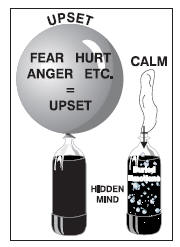 Picture 6: Burying causes the balloon to shrink, making a person
feel calm.
Picture 6: Burying causes the balloon to shrink, making a person
feel calm.
D. The saturation point of the hidden mind. The problem is that the hidden mind does not have a limitless capacity to store painful emotions. As the person’s hidden mind keeps filling up with painful emotions, he finds it harder and harder to calm himself down by burying them. When the hidden mind finally reaches its saturation point, he can no longer bury his painful emotions. Now, when painful emotions related to new bad events and problems appear in the conscious mind/balloon, they stay there. The re-inflated balloon responds by obeying Rule #1: When the balloon inflates, stress symptoms appear. We will read more about saturation point in Chapter Seven.
As the balloon gets bigger and bigger, stress symptoms begin to reappear one by one, become persistent and get worse over time. As more painful emotions enter the balloon, it inflates even more and stress symptoms steadily worsen, such as poor concentration, anxiety, tension, depression, aches and pains, sleeplessness, irritability and impatience. If one asks this person, "How long have you had these symptoms?" he will say something like, "Oh, well, probably about three years." What this means is that his hidden mind reached its saturation point about three years earlier, and his balloon started re-inflating from then onwards. Unfortunately, most people do not seek psychiatric help until the balloon is about to pop, or until it has already popped.
E. Low stress tolerance syndrome. As stress symptoms reappear one by one, the person is at a loss as to why he has them. He also notices that when he is upset about something, he stays upset. No matter what he does, he cannot calm himself down. Why? Because he can no longer bury emotions in his hidden mind and shrink his balloon. This person is known as stressed-out. His symptoms have been warning signals sent by his brain chemicals to his conscious mind, saying, "Your soda bottle became saturated some time ago. Now your balloon is filling up with toxic, painful emotions. Get rid of them properly as soon as possible, damn it!" However, his focus now is on his increasingly uncomfortable stress symptoms, not his accumulating painful emotions. He’s like a person who has not noticed the gradual build-up of smoke in the house, and whose main focus is on how to switch off the screaming fire alarm.
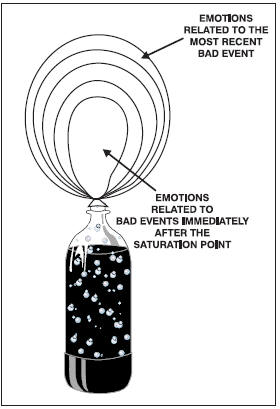 Picture 7: After the saturation point the balloon starts to re-inflate.
Picture 7: After the saturation point the balloon starts to re-inflate.
Some of these symptoms, such as chest pain, are very frightening. The person thinks they are caused by a real physical disorder, perhaps heart disease. Stress is the last thing on his mind, since he has thought all along that he was coping well with whatever was upsetting him. To get quick relief from his dreadful symptoms, he abuses alcohol or drugs or goes to see his doctor. His doctor diagnoses him as having a minor anxiety disorder or depressive disorder, and puts him on a tranquilizer or antidepressant medication. This takes care of his symptoms and gives him some temporary relief.
Over time, as more emotions accumulate in the conscious mind/balloon because of the inevitable stresses of daily life, the stress symptoms become worse. In addition, the painful emotions such as frustration and helplessness experienced in response to the unremitting symptoms themselves further inflate the balloon. The severity of persistent symptoms depends upon the size of the balloon. The bigger the balloon, the more stress symptoms there are. A person in this unfortunate predicament is said to be having low stress tolerance syndrome (see picture 8). Depending upon the size of one’s balloon and the type of painful emotions in his balloon, he suffers from many stress symptoms: irritability, angry outbursts, sleeplessness, excessive sleeping, anxiety, tension, poor concentration, inability to shut the brain down, a hundred different thoughts and emotions swirling in the mind, near-panic attacks, depression and many more. Depending upon the predominance of symptoms, people at this stage of stress are often diagnosed with minor stress disorders such as generalized anxiety disorder (GAD), Dysthymic disorder or chronic depression, Cyclothymic disorder (minor mood swings), attention deficit disorder (ADD), Fibromyalgia and the like. Their balloon could pop at any time. To prevent this from happening, they avoid all sensory stimulation, including people, commotion, traveling to distant places, watching television or anything that might upset them. They become increasingly withdrawn from social activities. We will read more about low stress tolerance syndrome in Chapter Eight.
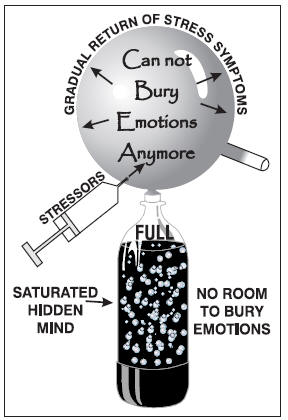 Picture 8: Low stress tolerance syndrome: the balloon is inflating
again.
Picture 8: Low stress tolerance syndrome: the balloon is inflating
again.
F. The breaking point of the balloon: the slow progression of symptoms finally results in stress disorder. While all this has been going on, the brain chemicals have kept changing in order to deal with the accumulating toxic, painful emotions in the brain or the conscious mind/balloon. Finally, goaded by a precipitating or triggering bad event—the straw that breaks the camel’s back—the emotional pressure in the conscious mind/balloon reaches its breaking point, and the balloon pops. The changes in the brain chemicals have finally resulted in a chemical imbalance. At this critical moment, the mind continually feels, "I just can’t take it any more!" The stress symptoms have finally crystallized into a relatively well-defined stress disorder, such as major depression, panic disorder, etc. (see picture 9). Unable to tolerate emotional pain, many people in this predicament experience suicidal ideas. We will read more about various stress disorders in Chapter Twelve.
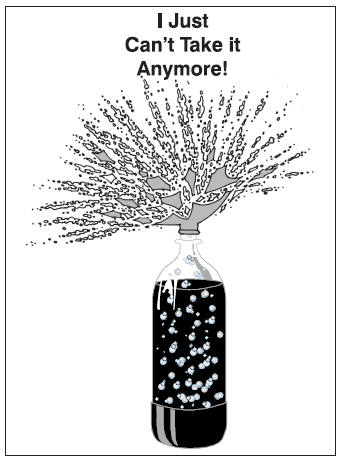 Picture 9: The breaking point: a stress disorder is born.
Picture 9: The breaking point: a stress disorder is born.
G. The double whammy—a blast from the past. Some people’s balloons pop suddenly and quite unexpectedly, and they are struck down with a major stress disorder like a bolt from the blue. In these people, a current painful event—say, the breakup of a relationship—brings into the conscious mind/balloon some painful emotions related to an old trauma buried deep in the hidden mind, such as being abandoned by one’s mother or father in childhood. The fury of the painful emotions spewing from the hidden mind is so great that it pops the balloon (see picture 10). It is as if the soda bottle has been so vigorously shaken that fizz bursts into the balloon attached to the bottle’s mouth. These people’s soda bottles may not have been saturated at all, but they did hold, under pressure, painful memories of a very traumatic event in their past. Double whammy is a blast from the past. Sometimes, however, double whammy is milder in severity and causes only a few symptoms. We will read more about double whammy phenomenon in Chapter Nine.
Suggestions for Further Reading
- The Power of Determination
- Factors Which Contribute to Happiness
- Mental Maturity and Adult Behavior
- The Power of Your Thoughts
- To Think Outside the Box and Its True Meaning
- How to Avoid Stereotyping People
- Meditation and Levitation
- Enjoying the Simple Pleasures of Life
- 10 Reasons Why Plans Fail
- Thought, Energy and Manifestation
- How to Deal With Unpleasant Situations
- Stop Blaming Others
- Ten Effective Ways to Improve Your Self Esteem
- Determination, The Sustaining Power
- Are you Bored With Your Life?
- What Do You Think Success Means?
- Why People Worship Celebrities and Film Stars?
- Dealing with Adversity
- The Success Mindset
- Why Older Workers Find It Difficult to Get a Job?
- Invite Peace Into Your Life
- How to Practice Forgiveness in Daily Life
- Effective Listening Skills
- Being the Best - A Book on Self-help
- Think Success : Essays on Self-help
- Essays On Dharma
- Esoteric Mystic Hinduism
- Introduction to Hinduism
- Hindu Way of Life
- Essays On Karma
- Hindu Rites and Rituals
- The Origin of The Sanskrit Language
- Symbolism in Hinduism
- Essays on The Upanishads
- Concepts of Hinduism
- Essays on Atman
- Hindu Festivals
- Spiritual Practice
- Right Living
- Yoga of Sorrow
- Happiness
- Mental Health
- Concepts of Buddhism
- General Essays
Author:Reproduced with the permission of Dr. Bob Kamath, M.D. ©2007. All rights reserved. Graphics, Illustrations and Cover Art by Nikki Brown. Dr. Kamath, a Board Certified psychiatrist, has been in private practice in Cape Girardeau, Missouri since 1982. Dr. Kamath specializes in Stress and the psychopharmacological treatment of stress-related disorders such as depressive and anxiety disorders. He has been licensed to practice medicine in Missouri since 1977. To know more about him visit his website.